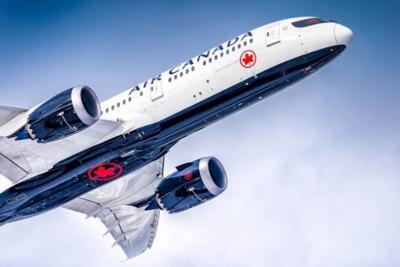Deal Includes Options for 12 Additional 787 Family Aircraft
Air Canada and Boeing have entered into a firm agreement by which the Canadian flag-carrier will acquire 18 of the storied plane-maker’s 787-10 Dreamliner wide-body airliners. Deliveries of subject aircraft are slated to commence in 2025’s fourth-quarter and end in the first-quarter of 2027. The agreement includes, also, options for an additional 12 Boeing 787-10 jets.

In addition to replacing older, less-efficient wide-body aircraft currently operating in Air Canada’s fleet, the newly-acquired 787-10s will provide flexibility at once conducive to the air-carrier’s growth and ability to meet anticipated long-term customer demand.
Air Canada president and CEO Michael Rosseau stated: "Air Canada has made investing in the passenger experience a core priority. Our experience shows customers greatly enjoy flying on the Dreamliner, so we are pleased to offer them a larger version of this popular aircraft, which will premiere a new, state-of-the-art interior cabin design. As importantly, the 787 is highly fuel efficient and will generate operational savings as well as support our sustainability goals of reducing emissions.”
At present, Air Canada operates thirty 787-9 and eight 787-8 model Dreamliners. Two additional 787-9 aircraft, acquired via a previous order, have yet to be delivered to the Montreal-based airline.
The newly-ordered 787-family aircraft are part of Air Canada’s ongoing fleet renewal efforts.
The 787, by virtue of its constituent material and aerodynamic technologies, is eminently conducive to Air Canada’s near- and long-term business and sustainability goals. The General Electric GEnx family dual-rotor, axial-flow, high-bypass turbofan engines by which the 787-9 and 787-10 are powered are quieter and more fuel-efficient than previous generation powerplants. Moreover, the mills are designed to run normally on Sustainable Aviation Fuel (SAF)—the makers of which assert the stuff reduces CO2 emissions by as much as eighty-percent over conventional petroleum jet fuels. According to Boeing, 787-10 operators opting to run their 787s on petroleum jet fuels will realize per-seat diminishments in engine-emissions of up to 25-percent lower than legacy wide-body aircraft.
All 787-9 models are stock configured with 298 seats comprising: thirty business-class, 21 premium economy-class, and 247 economy-class.

The 787-10, conversely, is capable of accommodating up to 344 passengers, a more typical configuration of the aircraft, however, accommodates 318 passengers by way of 44 business-class, 21 premium-plus, 54 economy-plus, and 199 economy seats. The 787-10 sports 6,187-cubic-feet of cargo volume, the largest dimmable windows of any commercial aircraft, and affords passengers exceptional comfort by dint of enhanced cabin pressurization and humidity controls.
The operating economics of Boeing’s 787 family will enable Air Canada to better service extant routes while adding new destinations and ultra-long-range routes to its service network. The 787-9 is capable of flying 7,565-nautical-miles non-stop. The larger 787-10, which concedes endurance for capacity but still manages a non-stop range of 6,330-nautical-miles, will allow Air Canada to service numerous popular, heavily-traveled, international and regional routes.
 ANN's Daily Aero-Term (05.17.24): Very High Frequency
ANN's Daily Aero-Term (05.17.24): Very High Frequency ANN's Daily Aero-Linx (05.17.24)
ANN's Daily Aero-Linx (05.17.24) ANN FAQ: Submit a News Story!
ANN FAQ: Submit a News Story! Classic Aero-TV: ANN Visits Wings Over The Rockies Exploration Of Flight
Classic Aero-TV: ANN Visits Wings Over The Rockies Exploration Of Flight Airborne Affordable Flyers 05.16.24: PRA Runway, Wag-Aero Sold, Young Eagles
Airborne Affordable Flyers 05.16.24: PRA Runway, Wag-Aero Sold, Young Eagles




